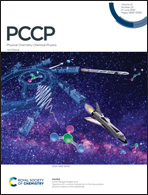Entangled excitons via spontaneous down-conversion
Abstract
A class of CN molecules support excitons with a well-defined quasi-angular momentum. Cofacial arrangements of these molecules can be engineered so that quantum cutting produces a pair of excitons with angular momenta that are maximally entangled. The Bell state constituents can subsequently travel in opposite directions down molecular chains as ballistic wave packets. This is a direct excitonic analog to the entangled polarization states produced by the spontaneous parametric down-conversion of light. As in optical settings, the ability to produce Bell states should enable foundational experiments and technologies based on non-local excitonic quantum correlation. The idea is elucidated with a combination of quantum electrodynamics theory and numerical simulation.

- This article is part of the themed collection: 2020 PCCP HOT Articles


 Please wait while we load your content...
Please wait while we load your content...